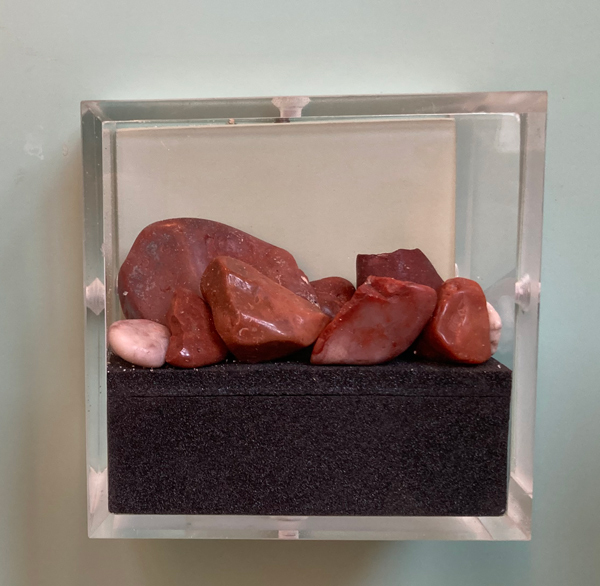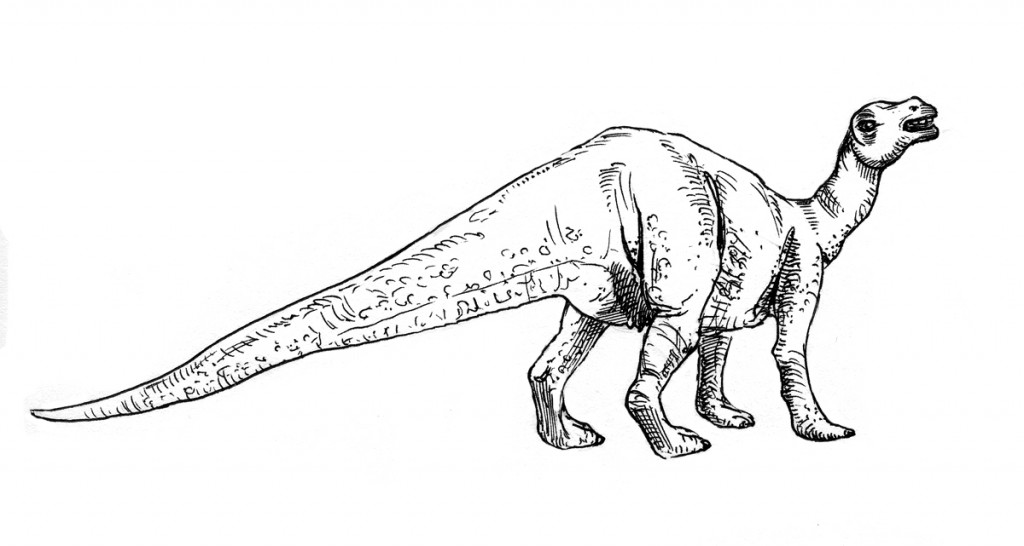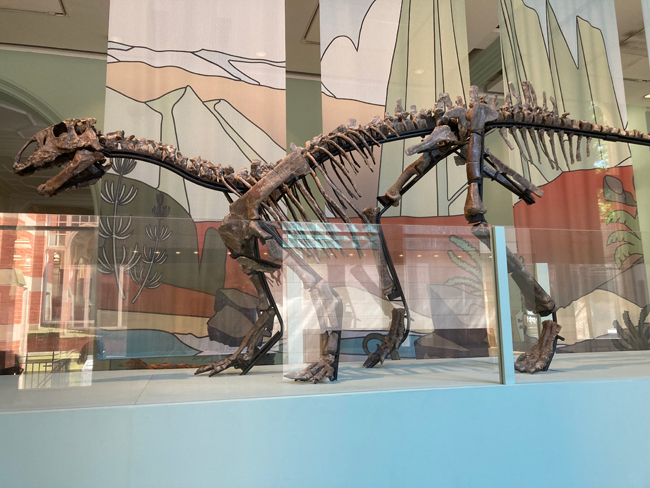Amazing Tenontosaurus Gastroliths on Display
A return visit to the Manchester Museum permitted Everything Dinosaur team members to take a photograph of the Tenontosaurus gastroliths that form part of a new dinosaur exhibit at the Museum. The gastroliths (stomach stones) were found in the body cavity of a Tenontosaurus tilletti specimen discovered in Montana in 1994.

Picture credit: Everything Dinosaur
The specimen (MANCH LL.12275) was acquired by the Manchester Museum in 1999 and a recently opened exhibit has permitted the fossil bones of this dinosaur to be displayed. The fossil material represents one of the best-preserved and most complete examples of Tenontosaurus tilletti known to science.

Picture credit: Everything Dinosaur
The Tenontosaurus illustration (above) is based on the CollectA Age of Dinosaurs Popular Tenontosaurus model.
To view this extensive range of prehistoric animal figures: CollectA Prehistoric Life Models.
Tenontosaurus Gastroliths
This amazing dinosaur fossil was nicknamed “April” after the wife of Barry James who cleaned and prepared the fossils for exhibition. Gastroliths (stomach stones) were found in the body cavity of this dinosaur. Some dinosaurs swallowed stones to help them grind up tough plants and aid digestion. These stones were held in a gizzard and helped to break down plant-material and assisted in the extraction of nutrients.
Only a handful of examples of stomach stones associated with ornithopods have been recorded. “April” the Tenontosaurus is the largest ornithopod dinosaur known to science associated with gastroliths.
Picture credit: Everything Dinosaur
“April” the Tenontosaurus is part of a new, permanent display highlighting research conducted by Manchester University scientists into the Dinosauria.
Visit Everything Dinosaur’s award-winning website: Everything Dinosaur.


